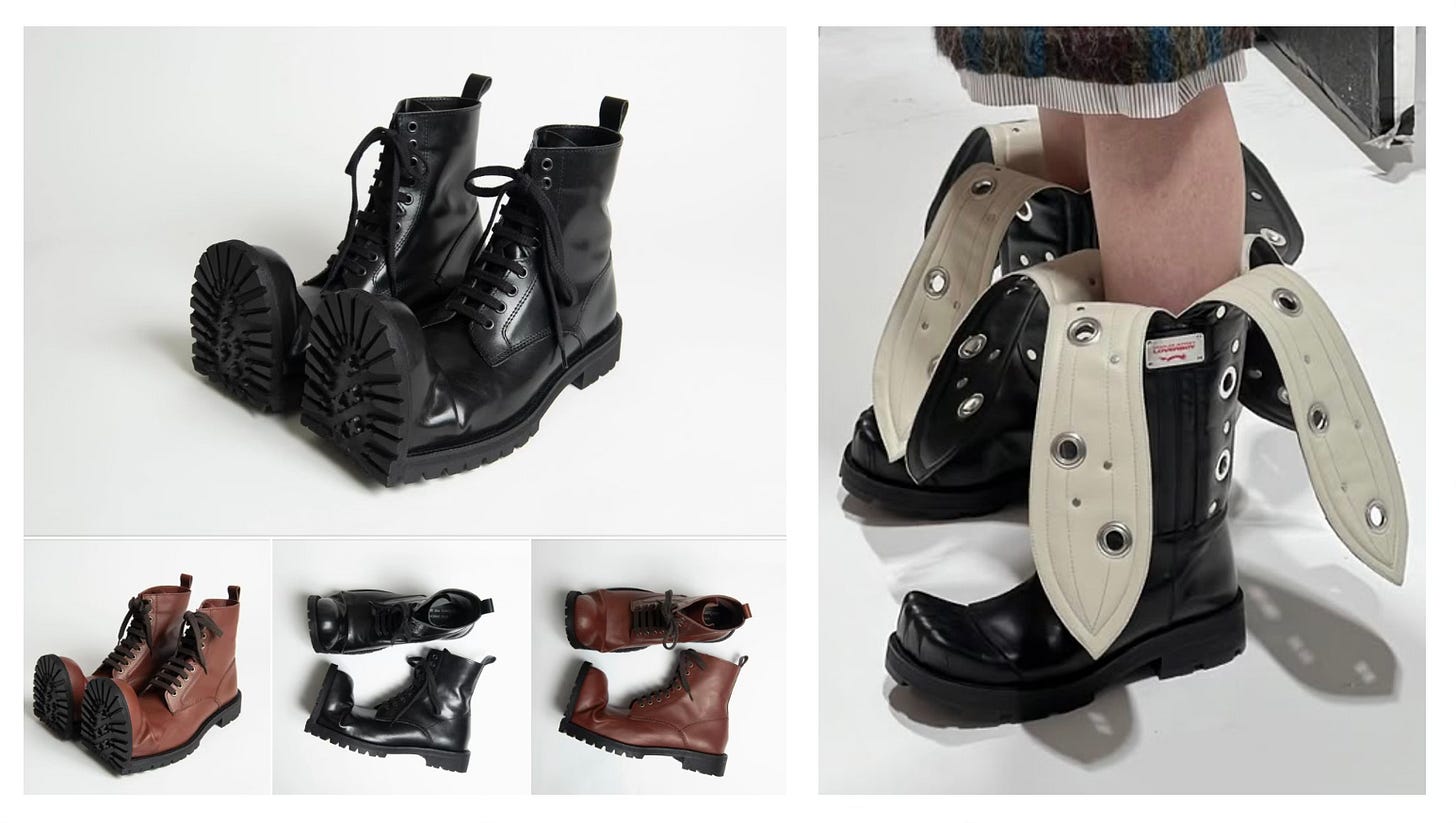Paris Fashion Week. Banana boots poised to skid, shoes that look like they’ve collided with a door, a scarf that’s lost its way and reinvented itself as a leg…
Does it all mean something, or is it just another provocation—a post-ironic gesture in a world where AI has sanded down every rough edge?
Maybe it’s a deliberate jolt. A call to look up, to feel the friction, to let chaos reclaim its place in the landscape.
No friction, no fiction
History is always built around an obstacle, a snag, an unexpected turn.
Without friction, there’s no drama, no tension, no story. A world without rough edges is a world without narrative.
Fashion seems to have understood this before anyone else. It amplifies the mistake, as if to remind us that it is necessary. While tech relentlessly tries to correct reality, fashion throws banana peels at our feet—forcing us to slip.
Farewell Feng Shui, welcome Vastu
The same winds of change are sweeping through our homes.
Gone are the interiors where everything flows effortlessly, where balance erases presence. Feng Shui, rooted in China, is giving way. In its place: Vastu, an ancient Indian tradition. Less fluid, more structured. Less smooth, more grounded.
Where one softens, the other embraces tension, channels force, gives weight to space.
It’s no longer about perfectly aligning your sofa with the front door. It’s about weight, balance, friction. Just like in fashion, smoothing things out is no longer enough.
The moment demands texture, contrast—relief.
And yet, today’s LLMs flatten everything
Our tools are built on averages. They don’t seek the flaw, the rough edge, the happy accident. They predict the most probable word, the smoothest sequence, the safest response. The problem isn’t a lack of originality—it’s that they erase friction, ambiguity, everything that makes a thought alive.
Because what defines us isn’t our averages, but our extremes. Our rarest strengths. Our blind spots. Our flashes of brilliance.
A generalist model can’t grasp these nuances. It doesn’t process a thought—it processes data, diluted among billions.
History doesn’t remember the average
But to think, to create, to move forward—is to stumble, to swerve, to break the frame.
Fashion understands this. Architecture is catching on. Technology, however, still resists. LLMs smooth, generalize, erase whatever sticks out. As if they were afraid of making a mistake. Instead of waiting for them to become like us, shouldn’t we make sure we don’t become like them?
Chopin and his Wrong Note, Stravinsky and his Rite of Spring, Gehry and his fractured architecture—all remind us that beauty is born from rupture, collision, imbalance.
Without roughness, there is no genius.
Look at who shapes the world today: Trump, Musk, Thiel. Nothing smooth, nothing consensual. They polarize, they divide, they move forward by embracing their sharp edges.
In a world that tries to eliminate the flaw, they are the ones who command attention.
History doesn’t remember the average.It remembers what stands out, what disrupts, what breaks the pattern. Because in the end, as Godard said: "The margin is what holds the pages together."
MD






agree. thank you